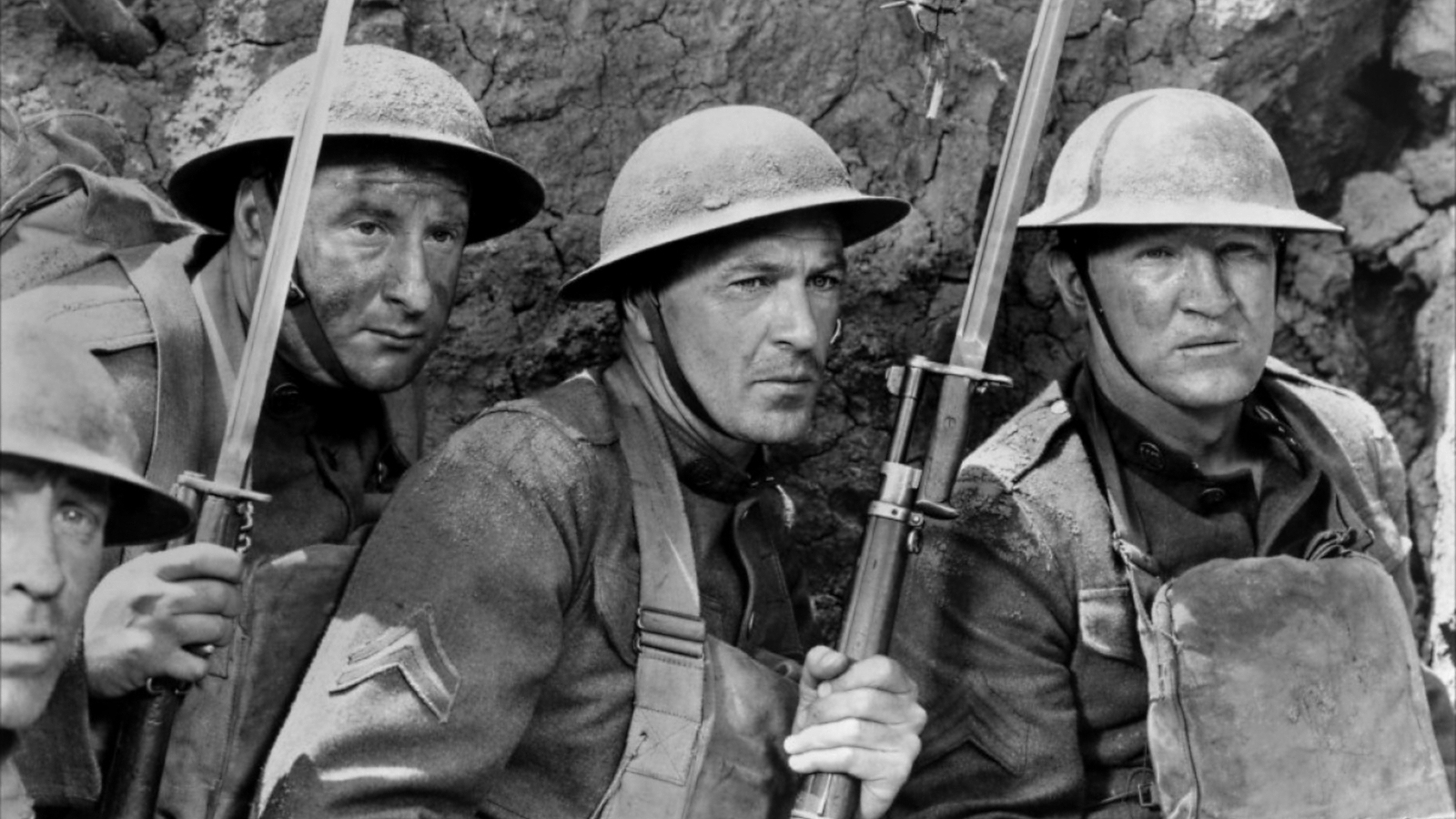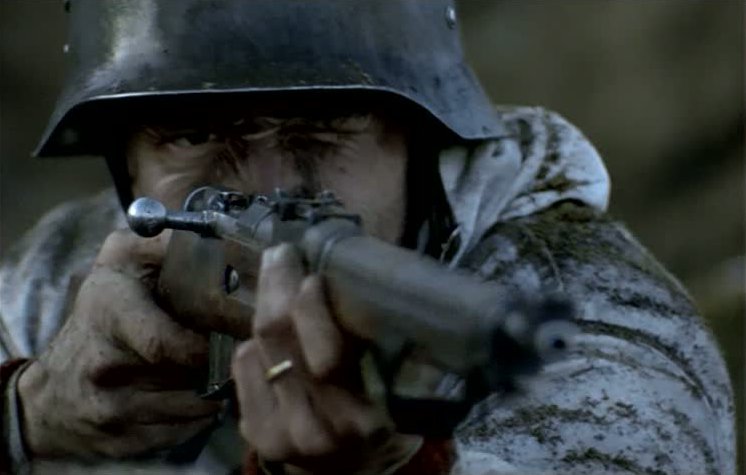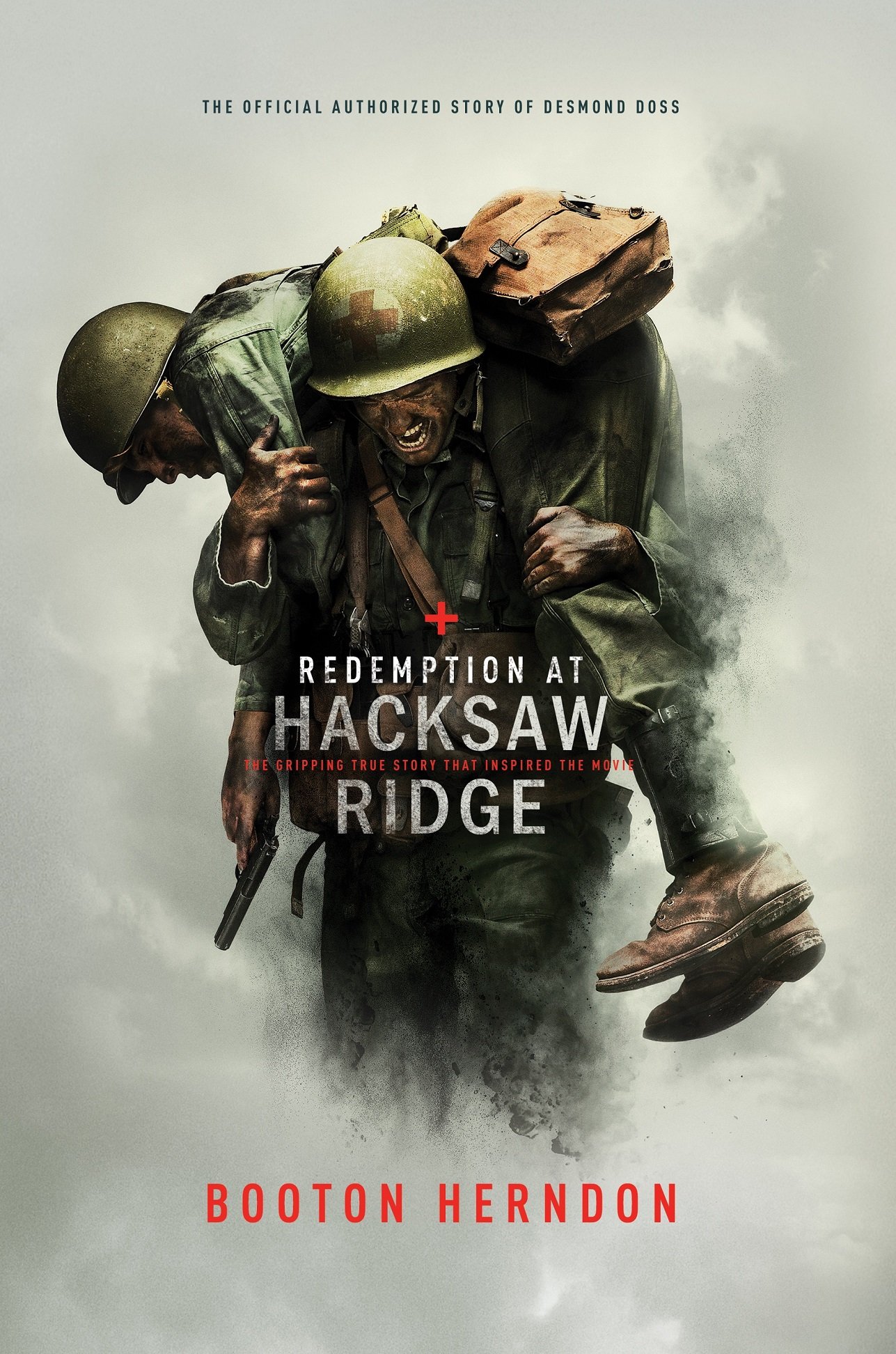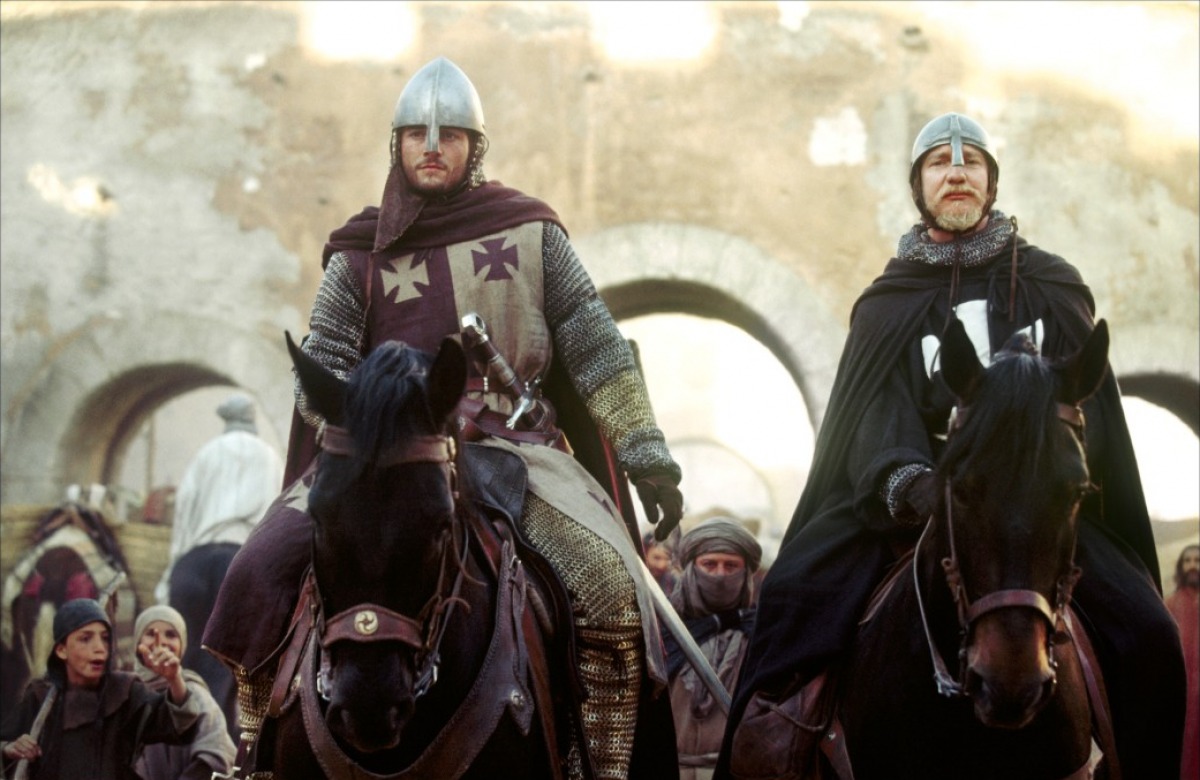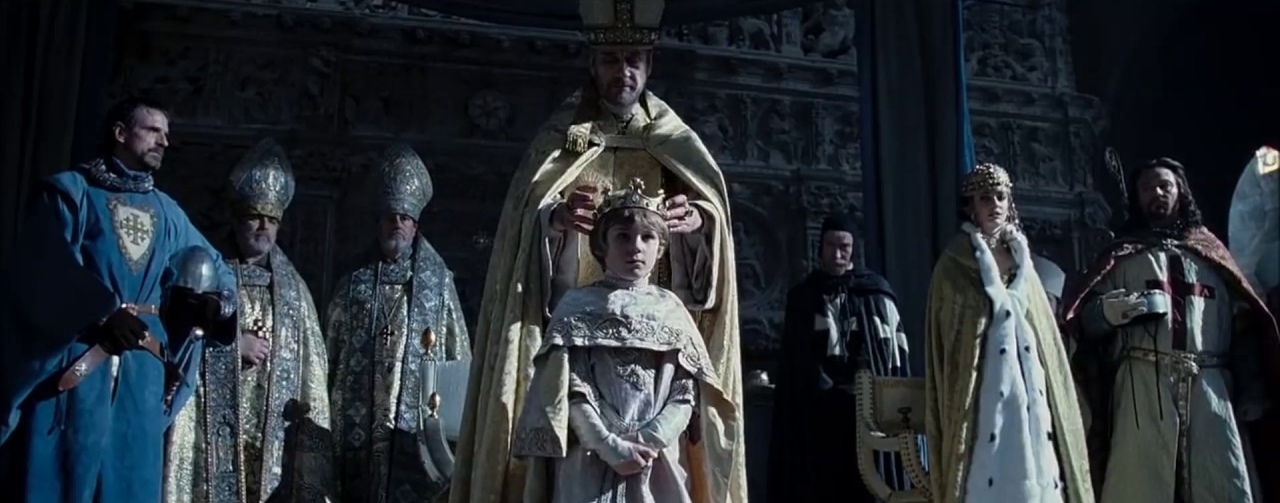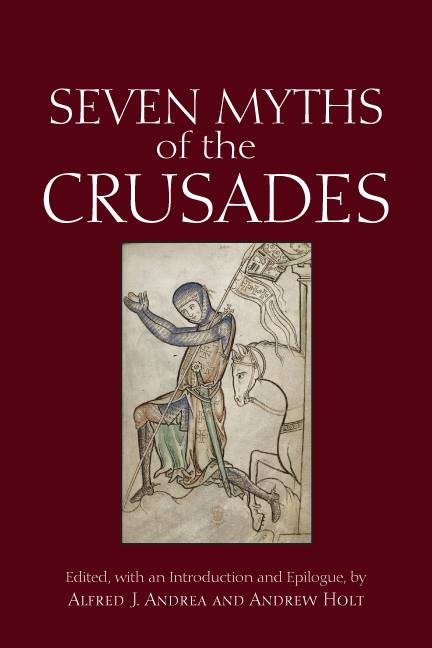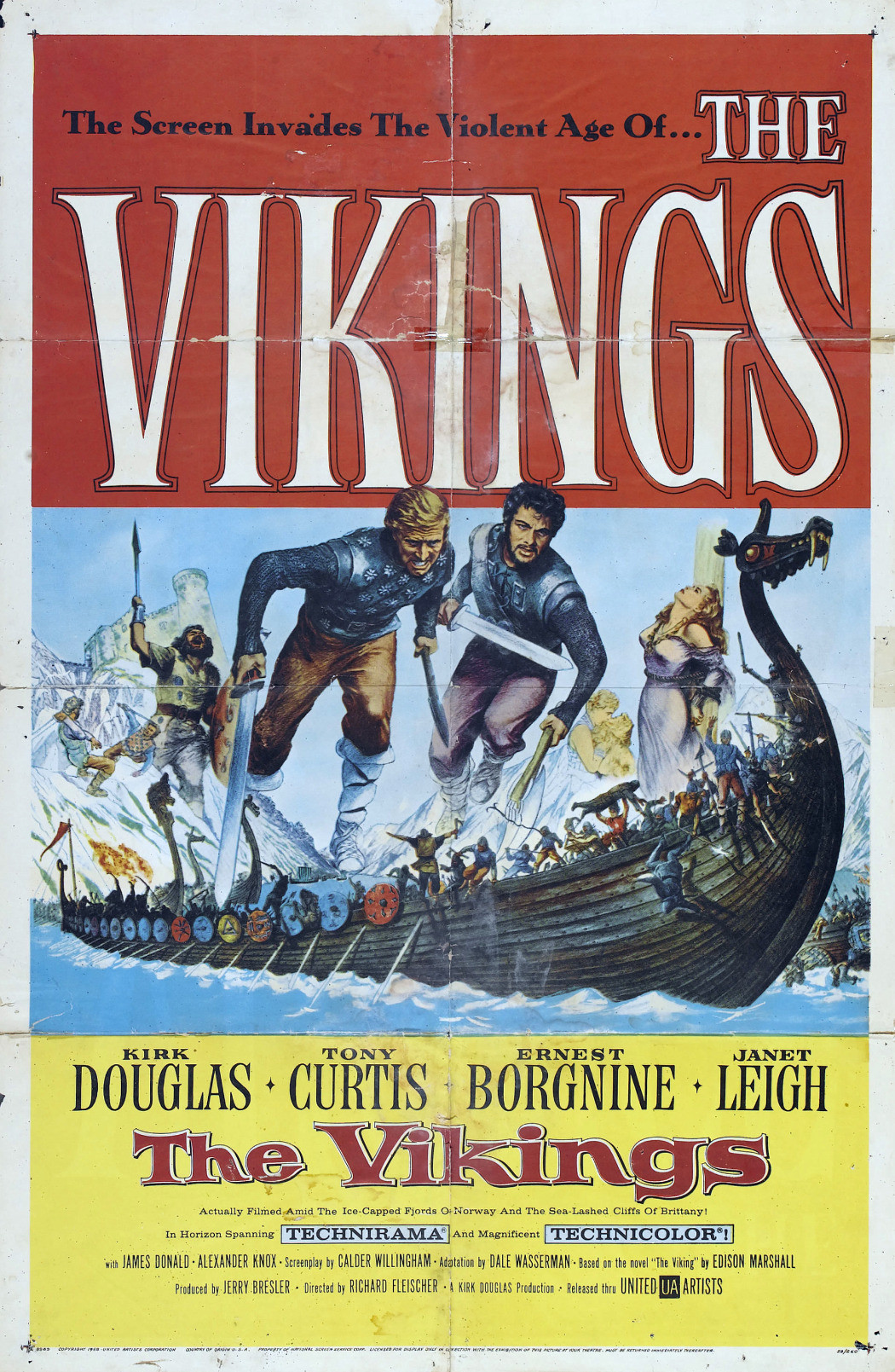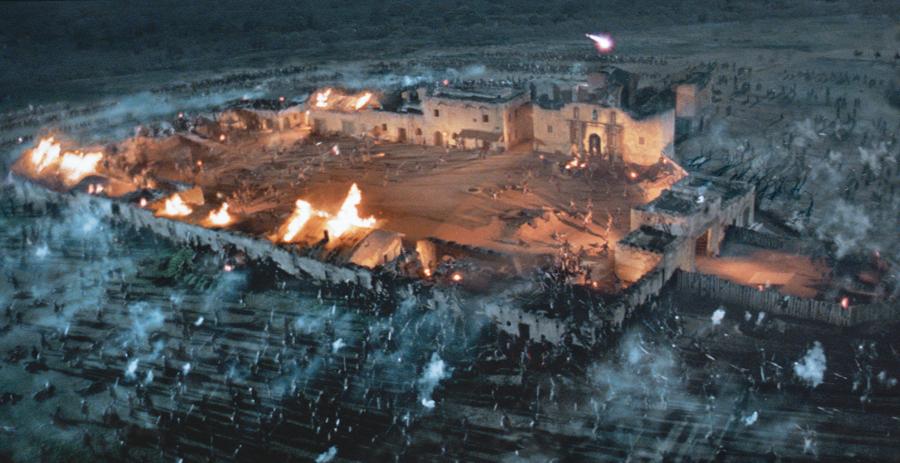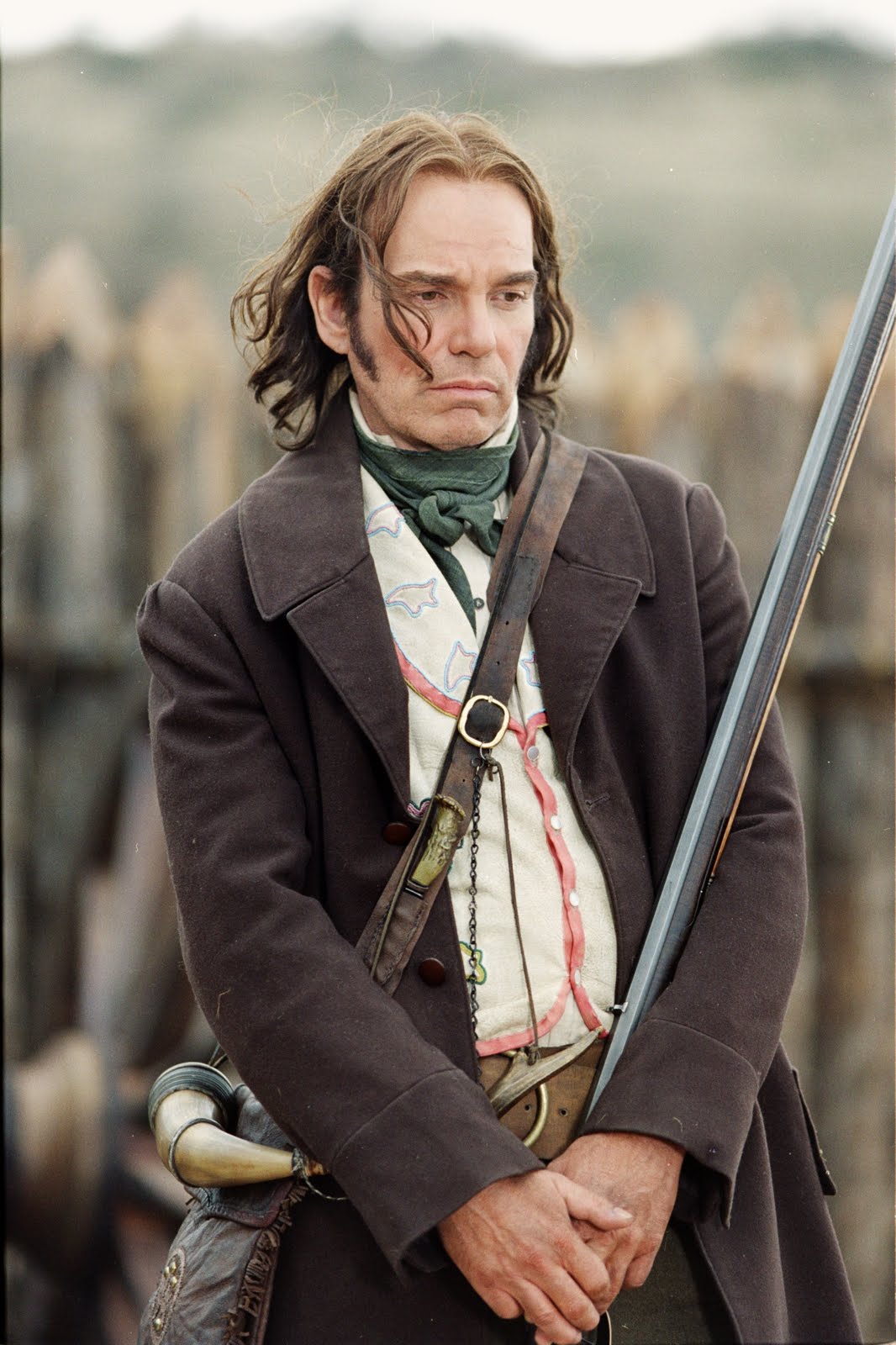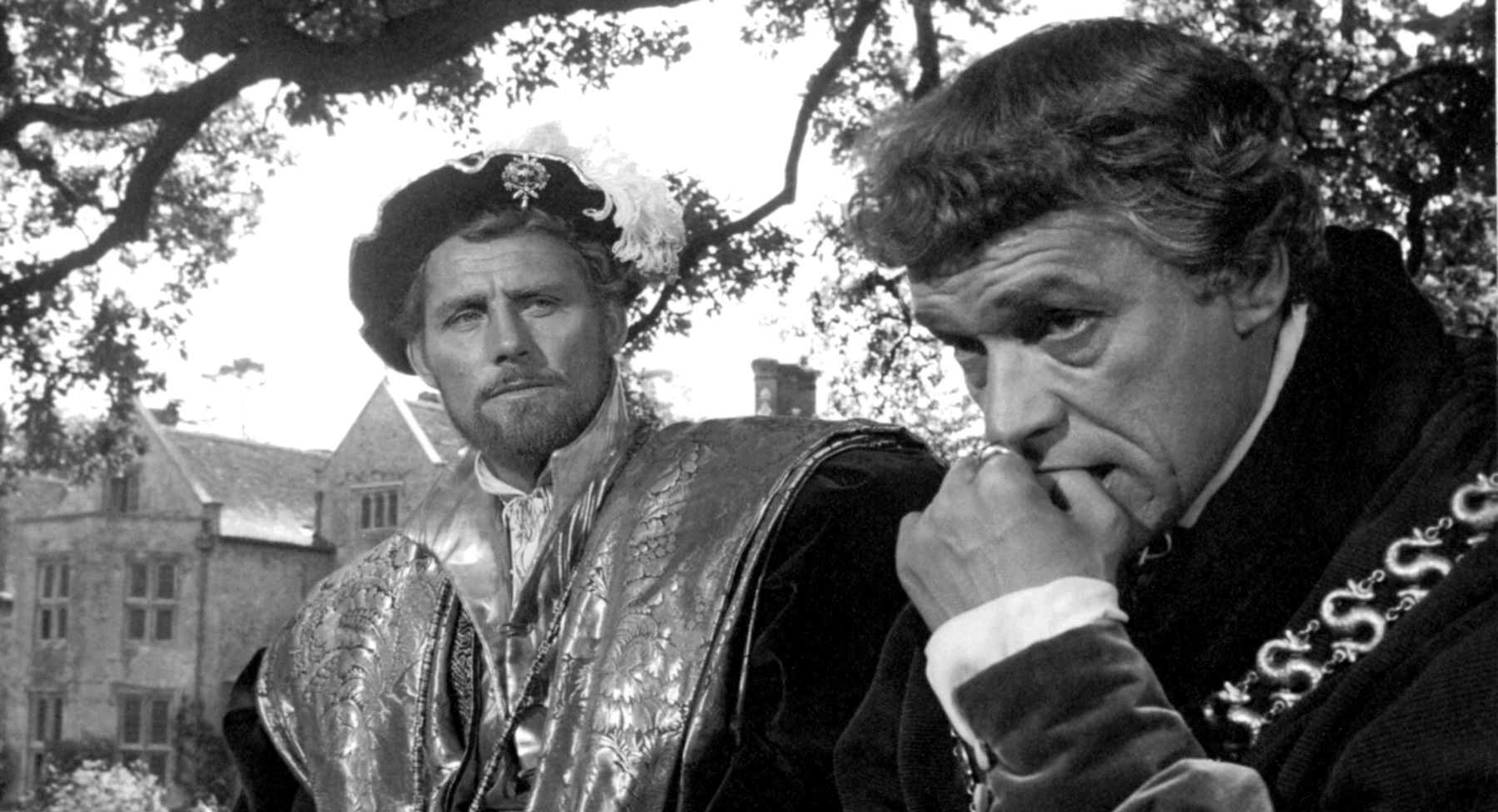Sergeant York
/George Tobias as “Pusher” Ross, Gary Cooper as Cpl. Alvin York, and Joseph Sawyer as Sgt. Early in Sergeant York, directed by Howard Hawks
Historical Movie Monday returns from hiatus! This October and November, I’m commemorating the centenary of the end of the First World War by focusing on films about that conflict, and today we look at a film whose central events took place exactly one hundred years ago today—October 8, 1918. The film is Sergeant York.
“Well I’m as much agin’ killin’ as ever, sir. But it was this way, Colonel . . . when I hear them machine guns a-goin’, and all them fellas are droppin’ around me, I figured them guns was killin’ hundreds, maybe thousands, and there weren’t nothin’ anybody could do, but to stop them guns. And that’s what I done.”
The history
October 8, 1918 was the thirteenth day of the Meuse-Argonne Offensive. This massive American push into the German lines in northern France had opened with an artillery barrage that expended $1 million worth of ammunition per minute and involved 1.2 million US troops. It was the biggest and costliest offensive since the American Civil War—and is still the biggest to this day. For comparison’s sake, the US contingent of Operation Iraqi Freedom in 2003 included fewer than 200,000 men.
Despite outnumbering the German defenders, the Americans took enormous losses. Modern trench warfare had shocked the scientific, progressive Western world with its brutality, ineffectiveness, and sheer wastage since the beginning of the war in 1914, and nothing had happened over the four intervening years to ameliorate these conditions. The war was pure attrition, and all sides doubled down on it. By the end of the first week of this American offensive, the original units that had gone over the top on D-day were cycling out of the line, greatly reduced, and fresh units replaced them.
One of these units was the 82nd “All American” Division, an infantry division. Soon after moving into the line, the 82nd continued the offensive by assaulting the German defenses head on. Casualties mounted.
On the 8th, units of the 82nd went over the top in an assault on Hill 223, a fortified position commanding a strategic railway line. German machine gun fire butchered the Americans as they advanced across no-man’s-land, forcing the survivors to cover and stalling the attack. At one point on the line, Sergeant Bernard Early moved to infiltrate the German trench network with a small raiding party in order to take out some of the machine guns. Early took seventeen others with him, among whom was Corporal Alvin C. York, a soldier from backwoods Tennessee.
Early’s party successfully infiltrated the German lines and surprised and captured a large reserve that was preparing for a counterattack. While rounding up the prisoners, German machine gun fire caught Early and his men by surprise in their turn, killing six and severely wounding three of their already small unit. Among the nine casualties were Early himself and three of his four supporting non-commissioned officers. The only leader left unwounded and capable of taking command was Corporal York.
SGT. Alvin york revisiting the site of his actions following the armistice, november 1918
York seized the initiative and, with limited supporting fire from his seven remaining comrades, worked his way into the German defenses and picked off the machine gun crews and supporting infantry. According to York, there were more than thirty machine guns firing continuously: “You never heard such a racket.” He carried on nonetheless, working his way from position to position and silencing the guns one at a time. “I was sharpshooting,” he wrote later. “All the time I kept yelling at them to come down. I didn't want to kill any more than I had to. But it was they or I. And I was giving them the best I had.” Finally, a German officer who had personally shot at York repeatedly with no effect called out that he wanted to surrender his men. York accepted and directed them to the prisoners already under watch with his comrades.
By the end of the action, York had used up all of the ammunition for his Enfield rifle and had even shot down an entire squad of German infantry with his Colt M1911 automatic. When he and his surviving comrades returned to American lines, they counted 132 prisoners, including four officers. He killed between twenty and thirty Germans in the course of the fight. His assault on the machine guns eased the fire on the rest of his unit and allowed the advance to continue, with breakthrough coming a few days later.
York’s actions earned him the Distinguished Service Cross, the French Croix de Guerre, and the Congressional Medal of Honor. And his actions were more remarkable yet in that he was—like Desmond Doss, who we looked at earlier this year—a devoutly religious pacifist. Rejected in his application for conscientious objector status, York had been drafted and forced into the war.
The film
gary cooper and walter brennan as alvin york and rev. rosier pile in a Warner Brothers publicity still for Sergeant York (1941).
Sergeant York, released in 1941, tells York’s life story from approximately 1916 to his return home from the war in 1919. The film begins with York, a drunken hellraiser, disrupting a service at his devout mother’s church. The opening half of the movie deals with his riotous living and eventual religious conversion—thanks in no small part to his courtship of Gracie Williams, a neighbor girl who helps him turn his life around—with the second half covering his attempts to obtain conscientious objector status, his actions in the war itself, and his return home to Tennessee.
The story of Sergeant York the film is intertwined with the story of Sergeant York the man even more deeply than the usual Hollywood biopic. Following the end of the war and his return to his native Tennessee as a decorated hero, York tried to avoid the spotlight and refused on principle to profit from what happened that day in October. This refusal included film rights to his story. So while there were a number of war stories turned into films immediately after the war, Sergeant York’s was not among them. Compare the “lost battalion,” a unit relieved by the 82nd on the same day York was wiping out machine gun nests nearby. The film The Lost Battalion appeared the very next year and included a number of surviving soldiers playing themselves, including the battalion’s commander, Medal of Honor recipient Maj. Charles Whittlesey.
Because of his refusal to profit from his deeds, York faced a series of financial upsets during the 1920s that were only exacerbated by the stock market crash and Great Depression. Slowly over these years, York learned to use his reputation and image with the public to promote rural education, even founding York Agricultural Institute. But his projects floundered and his financial difficulties never entirely went away. Finally, in the early 1940s, York’s interest in starting a Bible college swayed him to accept an offer for the film rights to his story, and he personally negotiated several terms. He handpicked Gary Cooper to play him (if only we could all be so lucky), and insisted that the events of October 8 not be altered or exaggerated for dramatic effect.
Warner Brothers hired Howard Hawks to direct the project. Hawks, who had directed Howard Hughes’s controversial gangster film Scarface, was a veteran director adept at comedy, romance, and—especially important for Sergeant York—action.
Sergeant York’s standout sequences are the battle scenes. They’re visceral, unromantic, and realistic, even for a war film produced under the strictures of the Hays Code. I find that students, while they may squirm around at bit at the beginning of the clip I show them (beginning with York shipping out for France), get really involved once the attack begins.
June Lockhart, Joan Leslie, Margaret Wycherly, and Gary Cooper in Sergeant York’s central conversion scene.
The movie still holds up. This is thanks not only to the sure direction of Hawks and the camerawork of Sol Polito, who had shot action and adventure films like The Adventures of Robin Hood and The Sea Hawk with Michael Curtiz, but to the cast as well. Sergeant York is perfectly cast—from Cooper as York on down. Joan Leslie, as York’s radiant love interest Gracie Williams, is genuinely sweet—you can see why York would bend over backward to marry her—even if her Southern accent doesn’t stand up to scrutiny. The comic relief characters, which haven’t tended to age well in most 1940s movies, are not only still bearable but funny. “Ma wants ya, Alvin” and “Oncet around her is twicet around Bear Mountain” were catch phrases among me and my friends and still make me laugh. This is particularly true of York’s hillbilly drinking buddies, who could easily be simplistic Li’l Abner types but feel like real people. George Tobias as fast-talking New Yorker “Pusher” Ross is the broadest 1940s central casting type, but his friendship with York still feels real and is effective as a result.
But the standouts among the supporting cast are Margaret Wycherly as Mother York and Walter Brennan as Pastor Rosier Pile. Wycherly and Brennan are the heart and soul of the film—as literally as can be. Wycherly’s performance matches the young, unreformed Alvin’s bluster with quiet strength, a maternal stoicism and unconditional love York can’t escape. Brennan’s Pastor Pile is that rare combination of goofiness and respectability. It’s clear that Alvin respects him even while trying to keep him at arm’s length. While York’s love for Gracie starts him on his road away from alcohol and brawling, his mother and her pastor bring him the rest of the way, to redemption. The culmination of these plot threads is what I still think is the only convincing conversion scene ever put to film.
Finally, there’s Gary Cooper as York. No one could have played the man better than Cooper. His York is a simple but thoughtful man, a man of courage, religious devotion, and moral principle who is nevertheless not a stick in the mud (compare again the winsome portrayal of Desmond Doss in Hacksaw Ridge, which skillfully walks the same tightrope). Furthermore, and perhaps most important for this film, even after the events of October 8 you can see that Cooper’s York is regretful about his actions. His discomfort with recognition and fame won by killing other men is subtle but palpable, and steers the film away from simple jingoism. Furthermore, it makes his relief to be home in Tennessee, to be given a farm, and to marry Gracie at last a relief for the audience as well.
Sergeant York succeeds as a movie not just because of its performances or its technical skill, but because it sincerely depicts its hero’s ambivalence about his heroism and the war itself. Home and peace are the better options.
The film as history
Sgt. Alvin York receives the Croix de Guerre from Marshal Foch in a Warner Brothers publicity still from Sergeant York.
Sergeant York is historically interesting on two separate levels. First, as a film about Alvin C. York, it’s great, and it’s broadly accurate, which is saying a lot for a biopic from this time period. Second, the timing of the film’s release has a lot to do with the resonance of the film’s message.
York’s insistence on a basic standard of accuracy was not ill-placed, and while the film is, again, a broadly accurate retelling of York’s story, the producers of the film did massage things a bit to make it manageable as a motion picture and to underline what they saw as the themes of York’s life. Though the film opens around 1916—a front page headline early in the movie, ignored by the Tennesseans reading the newspaper, reads “GERMANS SMASH AT VERDUN”—York’s religious conversion took place earlier, over the winter of 1914-15. And while York once compared his conversion experience to being struck by lightning, the literal lightning bolt that stops the film’s York in his tracks and turns him toward his mother’s church was a cinematic invention. York didn’t mind. As his wife put it, “That [scene] was just demonstrating the power of the Lord.” And it’s a brilliant scene.
There are also the minor things films change: York was actually the third of eleven children, not the eldest of three, while his unit is shown receiving M1903 Springfield rifles, York actually used an M1917 Enfield rifle.
Joseph Sawyer, Gary Cooper, and Pat Flaherty in Sergeant York’s unusually gritty battle sequence.
The most important things, however, the film gets right. York did misspend much of his youth and did frequent bars—called “blind tigers”—on the Tennessee/Kentucky border. And this lifestyle did end pretty much cold turkey under the combined influence of Gracie, his mother, and Pastor Pile.
Furthermore, the film’s climactic battle scene is an almost blow-by-blow recreation of the actual event—an unusual level of accuracy from 1940s Hollywood. Virtually the only change to York’s actions was due a technical issue: when attacked by the squad of German soldiers, every one of whom York dispatched with his pistol, the filmmakers substituted a German P-08 Luger since the Colt couldn’t be made to fire blanks. When my students scoff at that scene, I always enjoy telling them that that’s exactly how it happened—with only the weapon changed.
Probably the biggest change is more subtle. When York’s company commander, Captain Edward Danforth, swaps scriptures with him regarding the morality of violence and what Christians ought to do about it, the film has York discovering Matthew 22:21: “Render therefore unto Caesar the things which are Caesar's; and unto God the things that are God's.” While Danforth did present his arguments for York’s participation in terms of rendering unto Caesar, more decisive for York was a discussion of Ezekiel 33:1-9. This passage, with its image of a watchman on the walls protecting people “if the sword come,” with a penalty of death if he neglects this duty, convinced York that he could participate in the war with a clean conscience if he did it for the defense of others. Whether he could kill would be the test. And film, following the battle scene, accurately reflects York’s instinctive response when the time came:
York: Well, I’m as much agin’ killin’ as ever, sir. But it was this way, Colonel. When I started out, I felt just like you said, but when I hear them machine guns a-goin', and all them fellas are droppin' around me... I figured them guns was killin' hundreds, maybe thousands, and there weren't nothin' anybody could do, but to stop them guns. And that's what I done.
Maj. Buxton: Do you meant to tell me you did it to save lives?
York: Yes, sir. That was why.
Maj. Buxton: Well, York, what you’ve just told me is the most extraordinary thing of all.
But the other way in which I find Sergeant York historically interesting has to do with timing. Indeed, as I was reading around to prepare this post, I found at least one blogger willing to consider some kind of calculated propaganda conspiracy behind the film.
Alvin C. York and his mother at home in Pall Mall, Tennessee just after World War I
Sergeant York premiered in July 1941. Consider the US’s situation at the time: Germany in control of most of Europe and a month into its invasion of the Soviet Union, an invasion sure to result in the destruction of Russia; Japan intractable in its ongoing rape of China; Britain begging for help; and the United States a nominally Christian country in which over 90% of the population favor neutrality and nonintervention. What message could resonate more at that time than that the responsible use of violence to defend others is a duty?
Indeed, the message was controversial—Sergeant York was unpopular in die-hard non-interventionist circles—but struck home. By the end of the year, Japan had attacked Pearl Harbor and the United States was at war. Alvin York himself volunteered to reenlist, but more than two decades past his actions in the Meuse-Argonne Offensive, overweight, and pre-diabetic, he was rejected for combat duty. He did tour training camps, sell war bonds, and promote the war effort, but the film Sergeant York was his real contribution. Gen. Matthew Ridgway, who commanded the 82nd Airborne Division in World War II and later attended York’s funeral on behalf of President Lyndon Johnson, said that York helped convince raw recruits “that an aggressive soldier, well-trained and well-armed, can fight his way out of any situation.”
Sergeant York was the highest grossing movie of 1941 and was nominated for eleven Oscars, winning two—including Best Actor for Cooper. Nevertheless, Sergeant York has its detractors, as I’ve hinted above. During the Vietnam War, the campus left, missing York’s own apparent ambivalence about his actions at the end of the movie, viewed the film with obvious suspicion, and it is, according to York biographer David Lee, often viewed by film critics as one of Hawks’s few failures. The reasons can only be ideological. Despite some misgivings accumulated over the nearly 80 years since, the film has remained popular, and when I ask classrooms full of students if they have heard of him or the movie, there’s usually at least once who has.
I find as an educator that showing parts of the film is useful as an accurate, intense, realistic depiction of World War I that won’t have students puking in the aisles. It’s also a useful callback for when I do reach the beginning of World War II in my lectures, and I have my students consider the timing of the film’s release. Sergeant York involves them in its story the first time around, and in considering it again later—with the larger issues of neutrality and “America First,” just war, and the threat of total and then atomic war in the mix—it always provides food for thought. And I find it particularly resonates with Christian students who want to think carefully about such issues.
Alvin York, I think, would have approved. In his own words, “I do not care to be remembered as a warrior but as one who helped others to Christ.”
More if you’re interested
Biographer John Perry has published two books on Alvin York. The longer biography, Sgt. York: His Life, Legend & Legacy, appears to be out of print but is worth tracking down. The much shorter Sergeant York from Thomas Nelson’s Christian Encounters series is still available and worth the hour or so it takes to read. (Here’s my review from eight years ago.) Especially valuable in both are the chapters devoted to York’s life after the war, forty years in which his return to normal life were complicated by debt, attempts to open first an agricultural college and then a Bible school, and, in his later years, struggles with the IRS over undeclared film royalties that he had given away. There is also Sergeant York: An American Hero, by David D. Lee, from the University Press of Kentucky, which I haven’t read but appears to be a well-researched scholarly biography.
You can also read York’s diary, published in the 1920s as Sergeant York: His Own Life Story and War Diary, in a few places online, all poorly formatted. Diary includes eyewitness testimonials regarding York’s actions on October 8. Here are links to the text at the Internet Archive and a site called Acacia Vignettes, which links back to a page at the Alvin C. York Institute, where you get a 404 Error. Happily, in the course of hunting these down, I now discover that the book is being reprinted for the centenary. It becomes available tomorrow; you can find it on Amazon here.
If you’re looking for a good online resource, here’s a quite lengthy and well-researched article from Providence on York’s crisis of conscience called “Serving God or Caesar.”
For the broader context of the war, the late Sir John Keegan’s history The First World War is still the standard one-volume text. On a more specifically related topic, historian Philip Jenkins’s recent book A Great and Holy War is a thorough look at the intensely religious dimension of World War I. All sides of the war—from the Catholics, Protestants, and noncomformists in both Germany and Allied countries to Muslims, Jews, and, tragically, Armenians in the Middle East—enlisted religious imagery for state purposes, and Jenkins examines how this both strengthened and eroded religious conviction during and after the war. It’s well worth reading.
Thanks for reading! Stay tuned.

